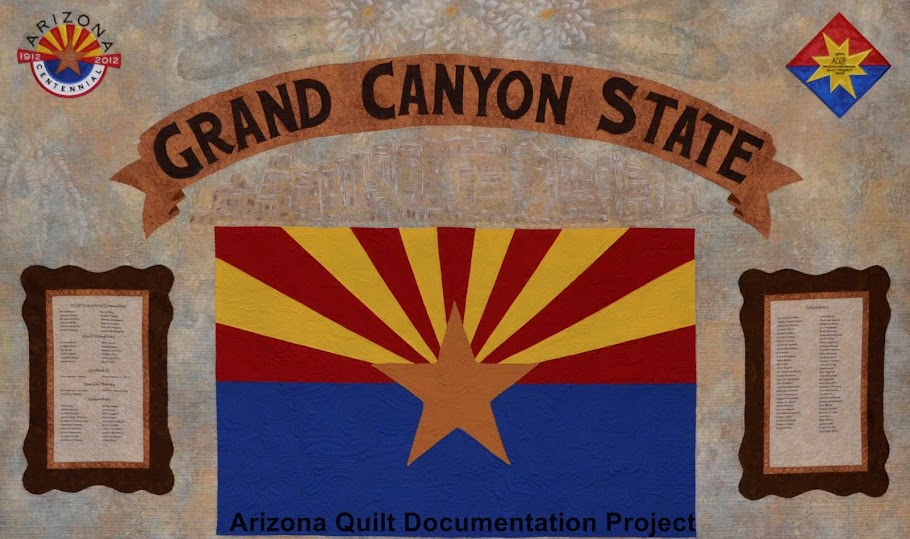By
Sue Franklin
Sue began the session by thanking Kate
for being photographer as Peggy is in New England with the Migrant Quilt
Project. She also mentioned meeting Dr.
James Burns, new Arizona Historical
Society Executive Director, in Mid-April at the Arizona History Museum. Laraine
invited her to come to help emphasize the importance of quilts in the Museum collection. Sue also introduced the Arizona Quilt Documentation Project to Dr. Burns and noted that the
Tucson team had documented all but a few of the Museum’s 100+ quilts. She mentioned other quilts the team has
documented, such as Quilt for a Cause,
the Jewish History Museum, and
others. Sue later emailed Dr. Burns a
description of the documentation project/process, the Quilt Index, and where
it’s housed.
Linda shared her vast knowledge and
collection of fabrics for the continuing education program. Her topic, Fabrics over Time, was perfect!
She brought tubs of vintage fabric to support her lecture and
distributed a handout, Fabric Over time. Additionally, she had a vintage Bow Tie quilt hanging with pinned tags
in varied places, indicating the fabric and its place in time. Linda shared a book by Edie McGinnis, A Bag of Scraps. Quilts of the Garment
District.
Linda captured everyone’s attention on
this continuing ed; if she’s willing, it needs repeating sometime in the
future.
On the documentation side, the group
documented two quilts, first, Kate’s Dahlia
Wreath, a lovely hand quilted piece she found in a yard sale last
summer. Four salmon dahlias with red centers were
connected by green leaves while the fifth dahlia proudly took center
stage. Terry shared the next one, Mimbres Symbols, a quilt she made after
attending a workshop in 2003. This lovely four block quilt was bordered in
stunning turquoise and black. Details of
this program are available on the AZQS web site www.azquiltstudygroup.org/.
Anyone is welcome to visit our meetings! We love
guests. For questions about either quilt
documentation or joining the team, please either call or email Tucson liaisons
Sue Franklin, (520.490.4721; suevette63@comcast.net) or Terry Gryzb-Wysocki, (520.749.9326;
terry-gw@mindspring.com).
New team members are welcome. Monthly training sessions are held from
9:30 until 12:30 at the Ellie Towne Flowing Wells Community Center on Ruthrauff
Road. The next meeting is Monday, June
11th.
Information about quilt documentation
teams throughout Arizona may be obtained from Lynn Miller at either
480.202-1230 or azquiltdoc@yahoo.com. Lynn also needs people familiar with the
computer to aid her with data entry for the Quilt
Index. Lynn does distance training
which takes about two hours.


















